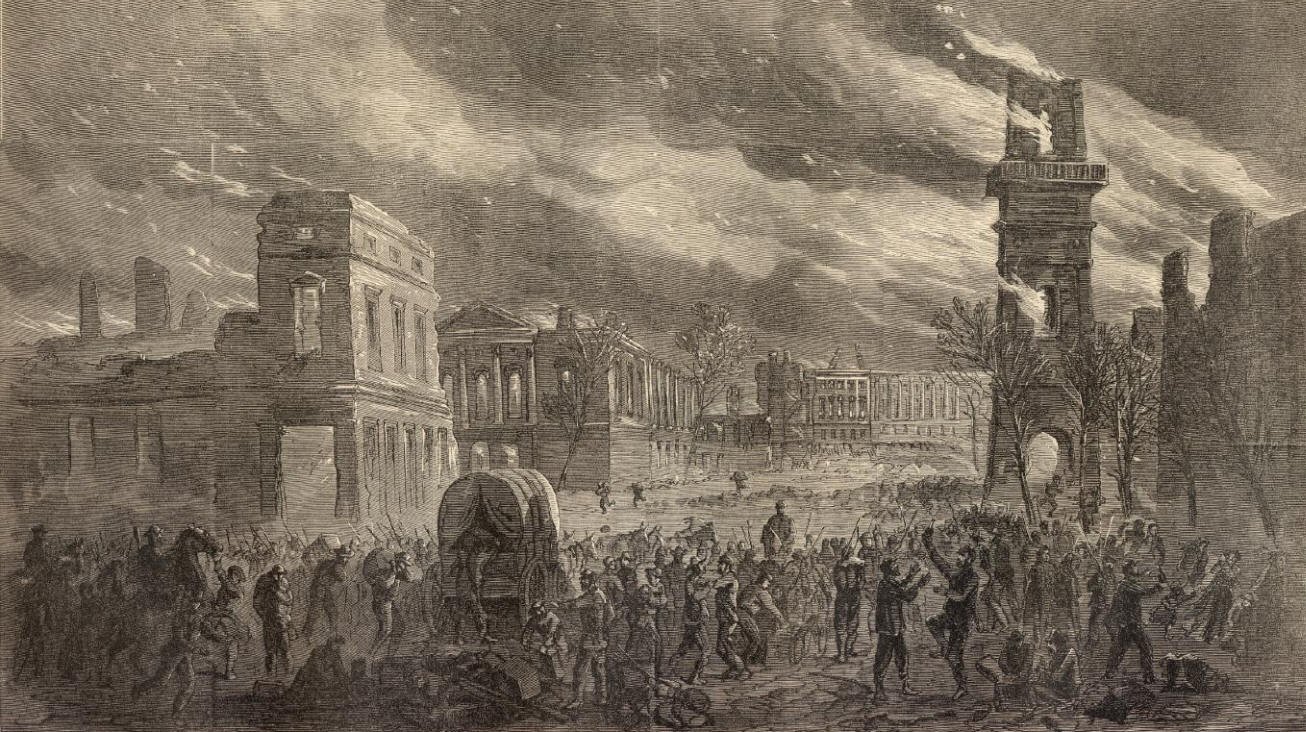Yesterday I watched a discussion of the burning of Columbia, South Carolina on History TV. The fire, which took place on February 17, 1865 has played an important role in the story the people of South Carolina tell themselves about the history of their state (although it is less famous in the country as a whole than the earlier burning of Atlanta, Georgia -- made famous in Gone With the Wind).
It seemed to me that an analysis of the failures leading to the destruction by the fire would give a different picture than did the panel in the discussion.
It seems that the immediate cause of the burning of the buildings was a fire that started in a large number of bales of cotton that had been piled on State St., the major street in the city at the time. The ropes that held the bales together had been cut so the cotton was loose. There was a high wind that fanned the flames and carried the burning cotton balls onto the buildings.
There are several possibilities as to how the fires were started in the bales:
- They could have been started on orders from retreating Confederates to keep the valuable cotton out of the hands of the union troops:
- They could have been started on orders of General Sherman to destroy valuable property of the Confederacy:
- They could have been started by soldiers without such orders, probably by Union soldiers, many of whom were reported drunk;
- They could have been started by others, such as former slaves celebrating their new freedom or by disaffected private whites.
Apparently no written orders have ever been found from either the Union nor the Confederate side. We will probably never know who started the fire in the cotton.
There were fire fighting units in the 19th century. Why did the Charleston firefighters nor the Union soldier put out the fires when they first started? Perhaps this could be attributed to the "fog of war". Many of the citizens of Charleston had left the city, and perhaps the firefighters were no longer present or no longer organized to take rapid action. Similarly, perhaps the danger of the fire in the cotton spreading to the buildings had not been recognized in time, or perhaps it had not been possible to organize the Union troops to fight the fire as they were taking control of the city and celebrating their victory.
Why was the cotton brought into the streets of Charleston and cut free from its bales? This seems to be clearly down to the orders of the Confederate officers who thought that they could thus deny the cotton to the Union troops.
I note that brick and stone buildings with slate or tile roofs, separated one from another are not likely to burn down in city wide fires. Charleston was apparently built in such a way that its business district was vulnerable to large scale conflagration. Perhaps a city built to a different code might have better survived.
Perhaps this was another "perfect storm" in that several things had to go wrong simultaneously for the city to be so badly destroyed.


No comments:
Post a Comment